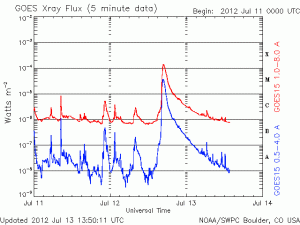I just added a base code plug in the files section for the TYT MD-380. Contains all Florida ID’s as of May 10 2016.
…DOUG
KD4MOJ
After playing around with the MD-380 program and entering frequencies, I decided to investigate the Contacts section of the program. Unlike D-Star which shows you the user callsign when receiving a transmission, DMR only shows you the 7 digit “subscriber ID or call ID” number which is supplied by the http://www.dmr-marc.net/ folks when you sign up for an ID. There is a database query on the dmr-marc site where you retrieve someones ID by either name or callsign. You would then enter this information in the Digital Contacts section (think of it as an Address Book) of the CPS MD_380 Program. The contact section also contains (probably at the top) the talkgroup information of the repeater or regional network that you want to connect/talk to.
There is another alternative to obtaining user ID’s by the FoxHollow folks [LINK]. There is a daily download available from the site that contains all the ID’s on a daily basis. Here is a direct link for the daily contact zip file.
If you wish to bulk import to your MD-380 using a program like the one N0GSG , Tom Wheeler, provides , the daily zip file contains two folders called CS700 & CS750 for the Connect Systems portable radios. The instructions will tell you that the files that you need are in the CS700 folder which are .csv files. However, they are missing two columns that prevent you from importing. In addition to the provided column data called ID, Callsign & Name, you also need a column for Group Call (or private call) and Alert tone. This can be accomplished by opening the file with Excel and creating two new columns for that data.
You can also manipulate the files in the CS750 folder which are Excel XLSX file. These are alittle more complete but the column data is positioned incorrectly. You can moved the columns around to be in the ID, CALL/Name, Group, Alert format then save the file as a comma separated file (.csv). I can make a short video of the two ways to convert the data for import if there is any interest. Drop me an email to mycallsign@kd4moj.org if you would like to see this
Register for DMR ID This link will take you directly to the www.dmr-marc.net user registration side
Daily ID Zip File:
Tom Wheeler, N0GSG, ContactManager v 1.20 (bulk import tool)
K4USD DMR cBridge – the Tallahassee NX4DN DMR repeater is connect though this cBridge. Also a list of talkgroups to aid in programming
K4USD cBridge Netwatch Dashboard Control Center K4USD Network – Allows you to watch your RSSI and Loss Rate, good for testing range of the repeater and your portable/mobile radio.
If you are into digital modes, you have no doubt have heard about the Texas Instruments chip issue (which they have acknowledged) that was brought to light by Jon, KD9DAL, that affects amateur radio digital modes using the Signalink or built in USB “soundcard” in various ICOM, Kenwood and Yaesu radios and interfaces. Here is the video that explains what the bug is and how to fix it:
Click Here to go to K3RRR’s site with the updated text (and a 15 point checkup) to go along with the new video. Here is the original findings by Jon, KD9DAL.
I’ll have the files posted shortly that are mentioned in the video (oscilloscope & level meter).
…DOUG
KD4MOJ
Just added the Kantronics Kam Manual to the Documents & Files.
-Doug
KD4MOJ
Ok folks, I just wrote up the instructions for the Prolific CAT Cable driver instructions. Instead of putting the instructions in a post, I decided to write them up in a PDF. You can find the documentation and files by clicking on the Documentation Menu item above (top right).
Let me know what you think!
…DOUG
KD4MOJ
Ok… after the 2012 Field Day, I got my digital edge back on. After taking a 6 month break and operating the digital station at FD, I decided to fire up the digital home station. Most of my digital operations previously has been Hellschreiber (FeldHell) which is a really fun mode. Mainly because it’s different from any other mode. Instead of seeing text on the screen such as RTTY or PSK31, FH is “painted” on the screen almost looking like a horizontal fax document. Check out the FeldHell Club for more info
My new love is JT65-HF by Joe Large, W6CQZ. A good resource with documentation and software links for this mode is IZ4CZL’s site. This is not a QSO mode but a structured mode. Each transmission last about 48 seconds, followed by 12 seconds allowed for decoding. A typical QSO with the structured exchanges last 7 minutes. An accurate clock is a must (actually required) since you have to be able to decode within the alloted time and then reply at the top of the next minute. A drift in the PC clock greater than 2 seconds will render the QSO useless. I’ve had good luck with Dimension4 NTP software.
I usually hang out on 30 Meters (10.138) or 17 meters (18.102). When conditions are permitting, you will find those two frequencies really active. Big solar flair yesterday caused most of the HF bands to die!

(Courtesy of US National Oceanic & Atmospheric Administration
at http://www.swpc.noaa.gov/rt_plots/xray_5m.html )
My primary digital station is an ICOM 756 Pro III and a SignaLink USB sound card interface. It’s a little pricey but in this case, you get what you pay for. Customer Service is A+! as well. Currently running a random wire dipole fed up 65 feet on the tower with an ICOM AH-4 remote tuner. That puppy works like a charm… a little pricey as well but worth it.
Enough updating for now… fire up JT65-HF and meet me on the bands!
…DOUG
KD4MOJ
